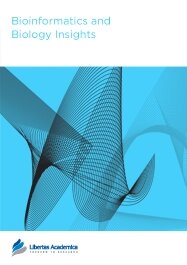

Publication Date: 26 Mar 2012
Type: Original Research
Journal: Bioinformatics and Biology Insights
Citation: Bioinformatics and Biology Insights 2012:6 33-47
doi: 10.4137/BBI.S8990

After the discovery of the complete repertoire of D. melanogaster Olfactory Receptors (ORs), candidate ORs have been identified from at least 12 insect species from four orders (Coleoptera, Lepidoptera, Diptera, and Hymenoptera), including species of economic or medical importance. Although all ORs share the same G-protein coupled receptor structure with seven transmembrane domains, they share poor sequence identity within and between species, and have been identified mainly through genomic data analyses. To date, D. melanogaster remains the only insect species where ORs have been extensively studied, from expression pattern establishment to functional investigations. These studies have confirmed several observations made in vertebrates: one OR type is selectively expressed in a subtype of olfactory receptor neurons, and one olfactory neuron expresses only one type of OR. The olfactory mechanism, further, appears to be conserved between insects and vertebrates. Understanding the function of insect ORs will greatly contribute to the understanding of insect chemical communication mechanisms, particularly with agricultural pests and disease vectors, and could result in future strategies to reduce their negative effects. In this study, we propose molecular models for insect olfactory receptor co-receptor OR83b and its possible functional oligomeric states. The functional similarity of OR83b to GPCRs and ion channels has been exploited for understanding the structure of OR83b. We could observe that C-terminal region (TM4-7) of OR83b is involved in homodimer amd heterodimer formation (with OR22a) which suggests why C-terminus of insect ORs are highly conserved across different species. We also propose two possible ion channel pathways in OR83b: one formed by TM4-5 region with intracellular pore-forming domain and the other formed by TM5-6 with extracellular pore forming domain using analysis of the electrostatics distribution of the pore forming domain.
PDF (6.65 MB PDF FORMAT)
RIS citation (ENDNOTE, REFERENCE MANAGER, PROCITE, REFWORKS)
BibTex citation (BIBDESK, LATEX)
XML
PMC HTML

We found Bioinformatics and Biology insights very supportive and quick in guiding us in submitting our manuscript. The review of the manuscript was also very prompt. We also found that the review was fair and prompt and that was the most important thing for us. It was a very interesting experience for us. We also liked the video abstract service, which is very novel and encouraging for authors.

All authors are surveyed after their articles are published. Authors are asked to rate their experience in a variety of areas, and their responses help us to monitor our performance. Presented here are their responses in some key areas. No 'poor' or 'very poor' responses were received; these are represented in the 'other' category.See Our Results
Copyright © 2013 Libertas Academica Ltd (except open access articles and accompanying metadata and supplementary files.)
Facebook Google+ Twitter
Pinterest Tumblr YouTube